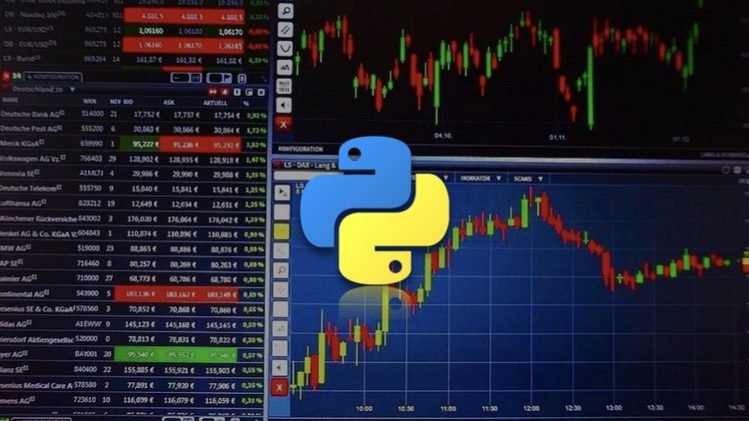Are you ready to revolutionize your understanding of Finance and Data Science?
Dive into the world of Python for Finance and Data Science, where cutting-edge technology meets the dynamic field of financial analysis.
In this comprehensive course, I will guide you through the essential principles and practical techniques that will supercharge your financial analysis skills. Whether you’re an aspiring financial professional, data scientist, quant-oriented or simply eager to expand your knowledge, this course will empower you to extract valuable insights from financial data and make informed decisions.
Harness the power of Python, the industry’s leading programming language for data analysis and automation. Explore the intricacies of financial data retrieval, preprocessing, manipulation and gain the tools to transform raw data into compelling visualizations and intuitive dashboards.
Discover how to implement Portfolio Analysis and Portfolio optimization techniques, all using Python. Uncover hidden patterns in the data, build and backtest trading strategies, and explore algorithmic trading possibilities.
But it doesn’t stop there! This course goes beyond finance by incorporating essential data science concepts. You’ll master the art of Data manipulation, Portfolio Analysis, Applied Financial Analysis, Backtesting and uncover critical business insights.
Get ready for hands-on exercises, real-world examples, and expert guidance from an actively working quant finance professional
My engaging curriculum ensures a seamless learning experience as I am equipping you with the skills to excel in the fast-paced world of finance and Data Science.
Don’t miss this opportunity to transform your career and gain a competitive edge in the financial or data industry. Enroll now and unleash the full potential of Python for Finance and Data Science!
What will YOU learn in specific?
-
Fundamental Python Programming
-
An Introduction to one of the most powerful Data Science and Financial Data Analysis Libraries: Pandas
-
A FULL guide into applied Financial Data Analysis
-
A FULL guide into Portfolio Analysis and Portfolio Management with Python on real stock data
-
You will learn to quantitatively analyze you own portfolio and give it a reality check! 🙂
-
An Introduction to Backtesting Trading Strategies and Vectorization
-
Optimizing a Portfolio using state of the art tools
-
Advanced Trading Strategies using concepts of Optimization and Machine Learning
-
Building state of the art and beautiful Interactive Finance Dashboard
-
Learn about the powerful Intersection of Pandas & SQL and use it to leverage your knowledge
Why this course and no other one?
-
I am actively working in the field of quant Finance covering Data Science and quantitive Finance topics since several years and wrote my Master Thesis in quantitative Finance – I know what’s relevant in practice but also what is relevant to cover to level up!
-
I have taught Python for Finance and Automated Trading topics to over 75.000 people on YouTube and countless people privately.
-
You will get a lot of Quizzes, Exercises to apply what I taught and I will give you relevant tips and practical advise. I challenge you to solve all of the provided exercises! 🙂
-
There is no single time filler in this course. We are getting straight to the topics and I am being as brief as possible but also taking my time to be as specific as possible
-
Outstanding support: If you don’t understand something, you feel you are stuck or you simply want to connect with me just write me a message and I am getting back to you as soon as possible!
What are you waiting for? Click ‘Enroll now’ to get started! I am excited and looking forward to see you inside the course 🙂






